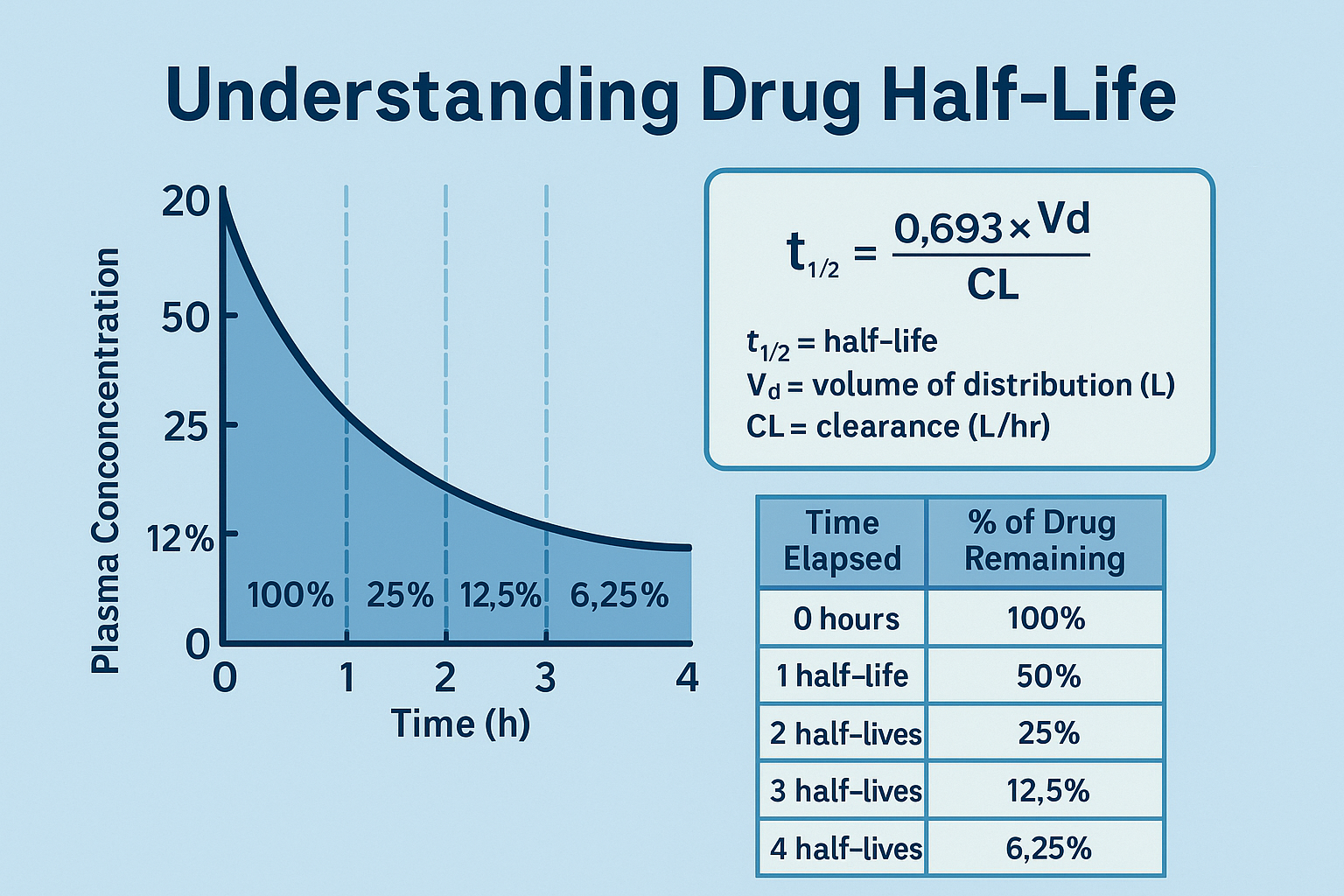💊 Understanding Drug Half-Life: Calculations, Curves, and Clinical Relevance
Drug half-life (t½) is a core concept in pharmacokinetics that shows up on every major exam—and in every rotation. It determines how often a medication is dosed, when steady-state is achieved, and how quickly a drug clears. Today, we’ll break down the math, the physiology, and the memory tricks that help you master it once and for all.
What Is Half-Life?
Half-life (t½) is the time required for the plasma concentration of a drug to be reduced by 50%.
It depends on two primary variables:
Volume of distribution (Vd)
Clearance (CL)
💡 Formula:
t½ = (0.693 × Vd) / CL
Vd = how widely the drug is distributed
CL = how quickly it's eliminated
🔍 Interpreting the Curve
| Time Elapsed | % of Drug Remaining |
|---|---|
| 0 hours | 100% |
| 1 half-life | 50% |
| 2 half-lives | 25% |
| 3 half-lives | 12.5% |
| 4 half-lives | 6.25% (≈ steady state elimination) |
🧠 KOTC Tip: It takes ~4–5 half-lives to reach steady state or complete elimination.
💡 Why It Matters Clinically
1. Dosing Frequency
Drugs with short t½ (e.g., acetaminophen) = frequent dosing
Long t½ (e.g., amiodarone) = spaced out dosing schedules
2. Drug Toxicity
In renal or hepatic failure, clearance ↓ → t½ ↑ → risk of accumulation
3. Emergency Reversal
Knowing t½ guides when to redose antidotes or restart monitoring
🧾 KOTC Mnemonic: “Half Gone by Half-Time”
Imagine a timer counting down drug effect. At every buzzer, half disappears.
Visual flashcards in KOTC help reinforce this timeline dynamically.
🔍 KOTC Visual Tools
“Half-Life Decay Curve” chart
Formula plug-in practice blocks
Clinical vignette mode: match symptoms to t½ changes
Gamified Q-bank with Curve Coins rewards for pharmacokinetics modules
📌 Before You Go…
Don’t memorize blindly—visualize, calculate, and dominate the curve.
🎯 Call-to-Action (CTA)
Master high-yield pharm concepts using KOTC’s adaptive question sets, formula drills, and visuals.
👉 Start your free trial today
✅ Conclusion
Drug half-life is more than just a number—it’s the foundation of dosing, duration, and decision-making. With KOTC’s tools, you’ll never look at pharmacology the same way again.
Frequently Asked Questions (FAQs)
-
Aim for 4-6 focused hours, ensuring you incorporate breaks to avoid burnout.
-
Practice mindfulness techniques, take practice exams under realistic conditions, and maintain a balanced lifestyle.
-
Set short-term goals, seek support from mentors, and reward yourself for small achievements.
-
Regular exercise improves focus, reduces stress, and enhances overall mental clarity.
-
KOTC offers personalized learning tools, gamification features, and adaptive question banks to help students stay on track without burnout.


